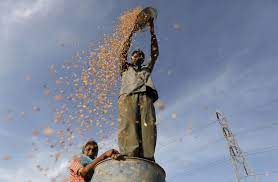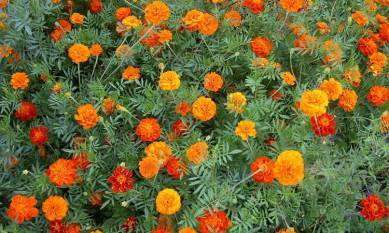SATARA, India, Nov 23 (Reuters) – India’s wheat planting is expected to remain stagnant despite a rally in prices to near record highs, as lower soil moisture prompts farmers in some areas to switch to less water-intensive crops, industry officials and scientists told Reuters.
Limited planting area, along with the threat of higher-than-normal first-quarter temperatures curbing yields, could compel the world’s second-biggest wheat producer to maintain its export ban or even force it to resort to imports, they said.
Farmers in the country had planted wheat on 8.6 million hectares as of Nov. 17, down nearly 5.5% from a year earlier, according to data compiled by the Ministry of Agriculture & Farmers’ Welfare.
______________________________________________________________________
Read Also : The U.S. Chicken Industry Must Stop Boiling Birds Alive
______________________________________________________________________
While wheat farmers in the key producing northern states of Haryana, Punjab and Uttar Pradesh have reliable irrigation that is likely to help maintain yields, farmers in the central state of Madhya Pradesh, the second largest producer after Uttar Pradesh, are switching to less-thirsty crops, industry officials said.
The wheat-growing area in Madhya Pradesh could drop by around 10% from a year ago, a senior official with a leading private wheat buyer said, declining to be named.
“Due to lower rains and limited availability of irrigation water, there has been observed a shift from wheat to chickpea in certain areas of Madhya Pradesh,” he said.
In neighbouring Maharashtra state, farmer Avinash Phalke earlier this month planted sorghum on three acres instead of wheat.
“Our well has nearly dried up, leaving us no option but to plant a crop that requires less water. I opted for sorghum as it also provides fodder for cattle,” he said.
Soil moisture levels have decreased and reservoirs have fallen as India received its lowest monsoon rains since 2018 this year, after the El Nino weather pattern made August the driest in more than a century.
A delay in paddy harvesting in Punjab, Haryana and Uttar Pradesh slowed wheat planting, which will accelerate in coming weeks, Gyanendra Singh, director at the state-run Indian Institute of Wheat and Barley Research, told Reuters.
India grows only one wheat crop annually, with planting in October and November, and harvests from March.
New Delhi raised the government wheat purchase price to 2,275 rupees per 100 kg for 2024, although current prices are nearly 25% higher – a rare discrepancy.
________________________________________________________________________
Read Also : Zoo Removes Parrots From Display For Swearing At Visitors,
________________________________________________________________________
“The soil moisture level is a concern in a few states, but the government’s decision to increase the Minimum Support Price by 7% will maintain farmers’ interest in wheat,” said Nitin Gupta, senior vice president of Olam Agri India.

EL NINO CONCERNS
For winter-sown crops like wheat and rapeseed, higher than normal temperatures during December to March, usually seen during El Nino years, could hurt yields, said Ashwini Bansod, vice president, commodities research at Phillip Capital India Pvt. Ltd.
________________________________________________________________________
Read Also : Diabetes Diet: Fenugreek (Methi) Water May Help Regulate Blood Sugar Levels
________________________________________________________________________
El Nino conditions will continue through the northern hemisphere during the April-June period, a U.S. government weather forecaster said earlier this month.
Wheat yields in India were curtailed during 2022 and 2023 by higher than normal temperatures during the crucial grain development stage, forcing New Delhi to ban exports.
While the past two years were La Nina years, winter temperatures were nonetheless higher, hurting yields.
In India, a country self-sufficient in grain production, wheat stocks stood at 21.9 million metric tons as of Nov. 1, significantly below the five-year average of 34.8 million tons.
“India could ill-afford below-normal production in 2024 as stocks are depleting. A lower crop would force the country to import wheat,” said a New Delhi-based dealer with a global trade house, who declined to be named as he is not allowed to speak to media.
NOTE – This article was originally published in reuters and can be viewed here
Tags: #agriculture, #crops, #farmers, #farming, #getgreengetgrowing, #gngagritech, #greenstories, #monsoon, #MP, #planting, #soil, #wheat






